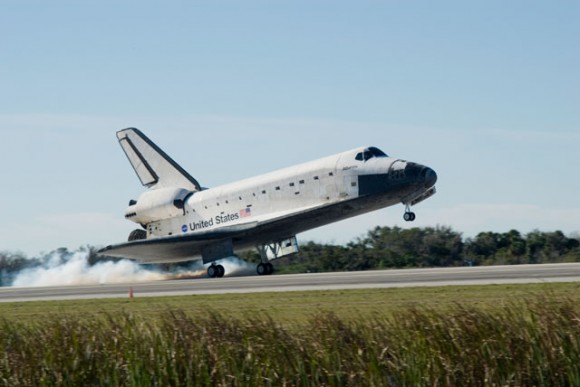will sell two of the three shuttles for display in the US for $29 million instead of $42 million, due to the recession * Regarding the third, NASA is negotiating through members of Congress to transfer it to the Smithsonian Museum

After the end of the shuttle program, NASA hopes to sell the three partially used shuttles (each made about 30 flights, compared to the 100 that were planned when they were built), to educational institutions, science museums or other organizations that could present them to the public.
Over a year ago, NASA issued an RFI for the entities interested in making proposals for the purchase of the shuttles, and the demand stated that the price would be 42 million dollars for the shuttle, which includes improving the safety of the shuttle to prevent risks for visitors, preparing it for display and transporting it to the airport near the destination. Today, perhaps due to the global economic crisis, NASA cut the price to 28.8 million dollars. NASA will absorb the cost of making the shuttles a safe place to visit, and will only charge for the preparations for the display and the cost of transportation. By the way, only US citizens can submit bids.
In a document from 2008, NASA announced that one shuttle would remain in the hands of the government and even began negotiations with the Smithsonian Museum in Washington through several members of Congress.
So far, NASA has donated important historical space items for free. Saturn rockets, lunar vehicles and other items from the Apollo project are on display at a variety of sites including the Kennedy Space Center in Florida, the Smithsonian Institution's Air and Space Museum in Washington, and the US Space and Rocket Center in Alabama.

6 תגובות
This is a sad and expected end of a project without a technological foundation, the brainchild of children who are passionate about science fiction films and want to realize what they saw in the cinema.
The failure is twofold since the manned flights themselves are something without any real scientific justification.
Much, much more could have been done in the past decades with ten robotic spacecraft without the absurd waste of resources on manned flights.
can learn a lot about the universe,
Hino can know what is under the ice of Jupiter's moons.
Maybe the grandchildren will get it, we won't.
Shame they don't send more shuttles into space
I took it to the dynamometer for testing.
Shasi problems.
Weak engine.
Of course - bodywork, but it's up to the seller (that's what NASA said).
A buying group is on the way.
First hand Astronaut has barely done 4 million kilometers, maintained and invested flexible price!
It's worth it. For example, I bought 2 and got the 3rd for free
post Scriptum
They don't accept checks
It is clear to you that the requested response here is:
"Only today! Three past ten!"
It amused me, anyway...